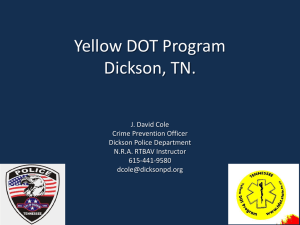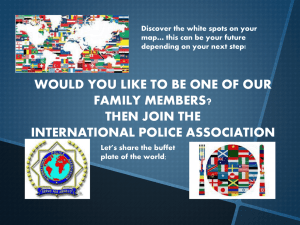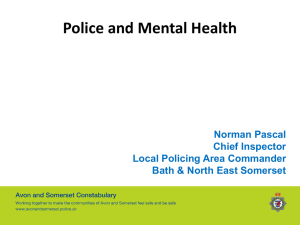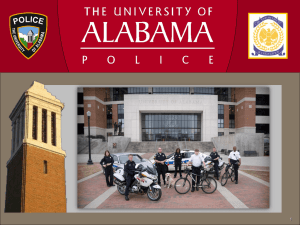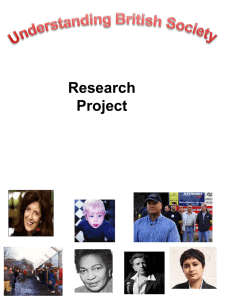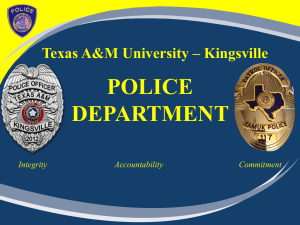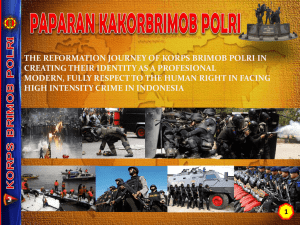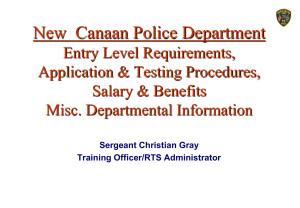Police Involvement During the Civil Rights Movement
advertisement
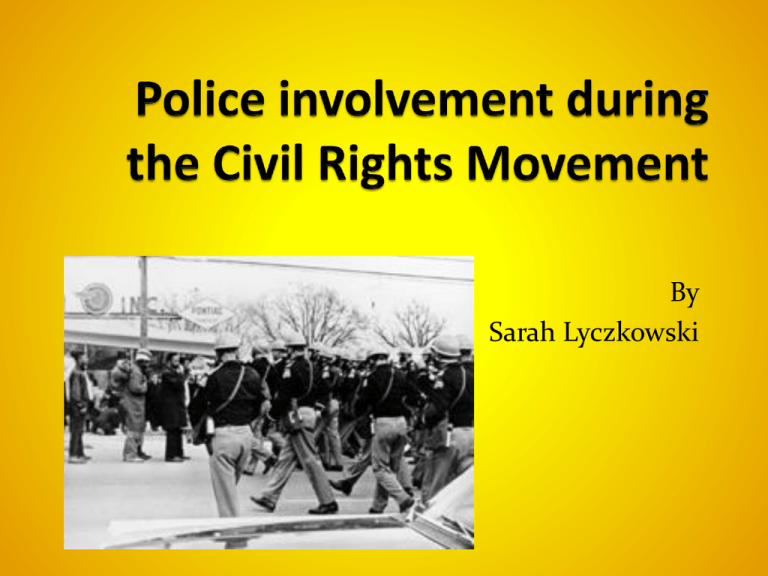
By Sarah Lyczkowski Overview of the Police’s involvement during the CRM The police had a big responsibility during the Civil Rights Movement. Many people wanted segregation and when it came to activists fighting for equality and leading marches, the police were the ones who responded to protests. Many of the police officers responded violently and used excessive force but some would try a nonviolent approach. Some policemen would arrest activists in order to avoid violence. Segregation in law enforcement In the 1950s African Americans were finally able to be hired in as policemen. But they weren't able to wear uniforms and they were only allowed to work with African American juveniles. Many states didn’t allow them to arrest whites either. Also in order to avoid racial tension they were stationed separately from white policemen. James Cherry He was the first African American police officer in Jackson city 1964. According to the Jackson Sun newspaper, he faced many challenges during his career. He not only was rejected by the white community but also the black community. When he would arrest an African American they normally would put up a fight. But also he faced problems with the white community, they didn’t see him as a “real police officer” and would often want a white officer to help them. Philosophy behind the Police’s response During a conference of the NAACP, Thurgood Marshall made a speech summarizing their view on the law enforcement and legal strategies. He claimed that laws have been in place since the 1800s but they weren't followed for three reasons: 1) The judges and juries don’t follow the law 2) When they do follow the law many juries are reluctant to protect the rights of African Americans 3) Many African Americans hesitate to go to the law because they feel laws aren't enforced properly towards them. Cited from the civil rights movement opposing viewpoint 6 of chapter 1 5 Eugene “bull” Connor (1897 - 1973) was a police chief in Alabama during the anti-segregation protests in downtown Birmingham. In the spring of 1963, Martin Luther King, Jr. launched a series of non-violent anti-segregation protests in Birmingham, Alabama. In response, Eugene "Bull" Connor ordered his police department to use fire hoses, police dogs, and night sticks to break up the demonstrations. Cecil Price (1938-2001) A deputy sheriff who arrested three civil rights workers in Mississippi in 1964. The slayings of the civil rights workers, Andrew Goodman and Michael Schwerner of New York City and James Chaney of Meridian, Miss., all in their early 20s, were among the most notorious crimes of the civil rights era. He released them six hours later and then investigators later established that Mr. Price followed them, pulled their car over again, then turned them over to a KKK mob. He was never charged with the murders but there was a federal inquiry and, by early 1965, the sheriff and his deputy and 16 other men had been charged with conspiring to violate the victims' civil rights. In October 1967, Mr. Price was convicted and found guilty James Bonard Fowler State Trooper in Alabama He and some other policemen were sent to Marion on the night of February 18, 1965. About 500 civil rights marchers were attacked by the police but the police said that the crowd refused orders and the policemen started swinging clubs. Fowler then shot Jimmy Lee Jackson and claimed it was self defense. He was never brought up on any charges after the shooting but in May 2007 he was convicted of murder and sentenced to jail. Bloody Sunday The Selma to Montgomery march had a tragic end. On March 7, 1965, 600 civil rights marchers were stopped at the Edmund Pettus bridge. They were blocked by state and local lawmen who greeted them with billy clubs and tear gas and pushed back into Selma. Laurie Pritchett (1926-2000) Police chief of Albany Georgia He had a nonviolent approach to demonstrations in the 1960s. He saw this as an effective strategy for bringing the campaign to an end before demonstrators could secure any gains in the movement. Even though many police officers never followed through on any of the promises so many people didn’t trust them. MLK has said that he trusted Pritchett and thought his nonviolent approach was a good alternative. Some positive aspects of the police Police officers led the Little Rock Nine students to Central High and they protected the students. Many people protested the fact that the black students were allowed to go to school and started to shout hateful words to the policemen, but the police still protected the students and made sure they got to school safely. ^^Police using fire hoses at school children ^^Laurie Pritchett Works Cited: Crosby, Emilye. "Black Rage In New Orleans: Police Brutality And African American Activism From World War II To Hurricane Katrina." Journal Of American History 98.2 (2011): 596-597. America: History & Life. HOSKEN, SIMON. "Policing The Blues: Remembering The Desegregation Of Law Enforcement In West Memphis, Arkansas." Arkansas Historical Quarterly 72.2 (2013): 120-138. America: History & Life. Smith, Brad W., and Malcolm D. Holmes. "Community Accountability, Minority Threat, And Police Brutality: An Examination Of Civil Rights Criminal Complaints." Criminology 41.4 (2003): 1035-1063. Academic Search Complete. Staples, Robert. "White Power, Black Crime, And Racial Politics." Black Scholar 41.4 (2011): 31-41. America: History & Life.
